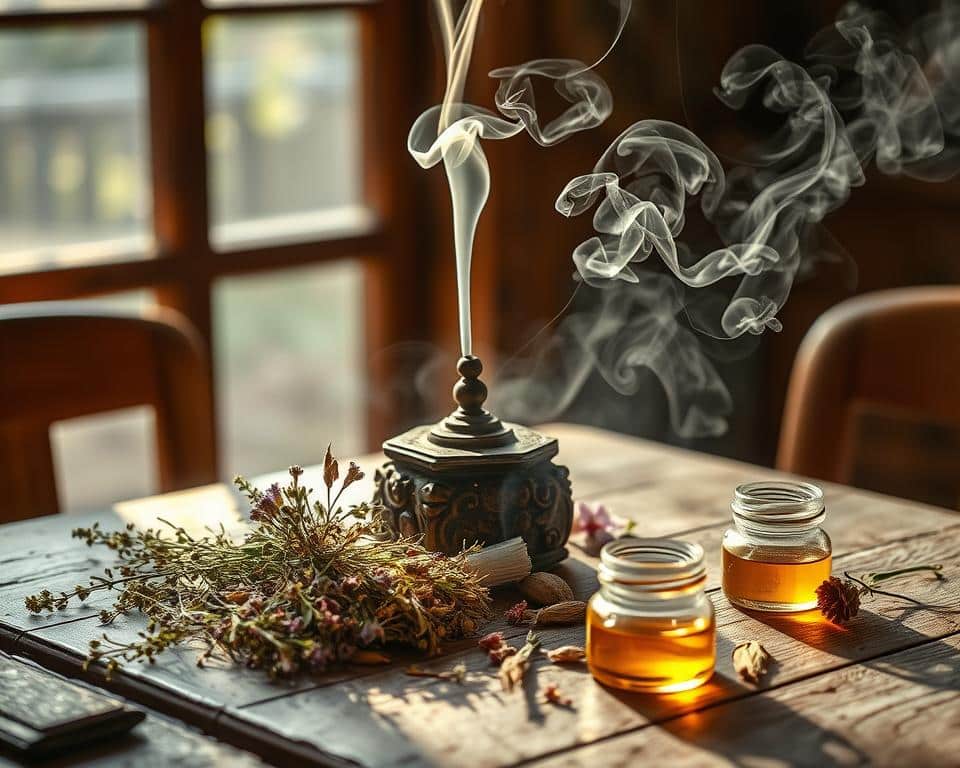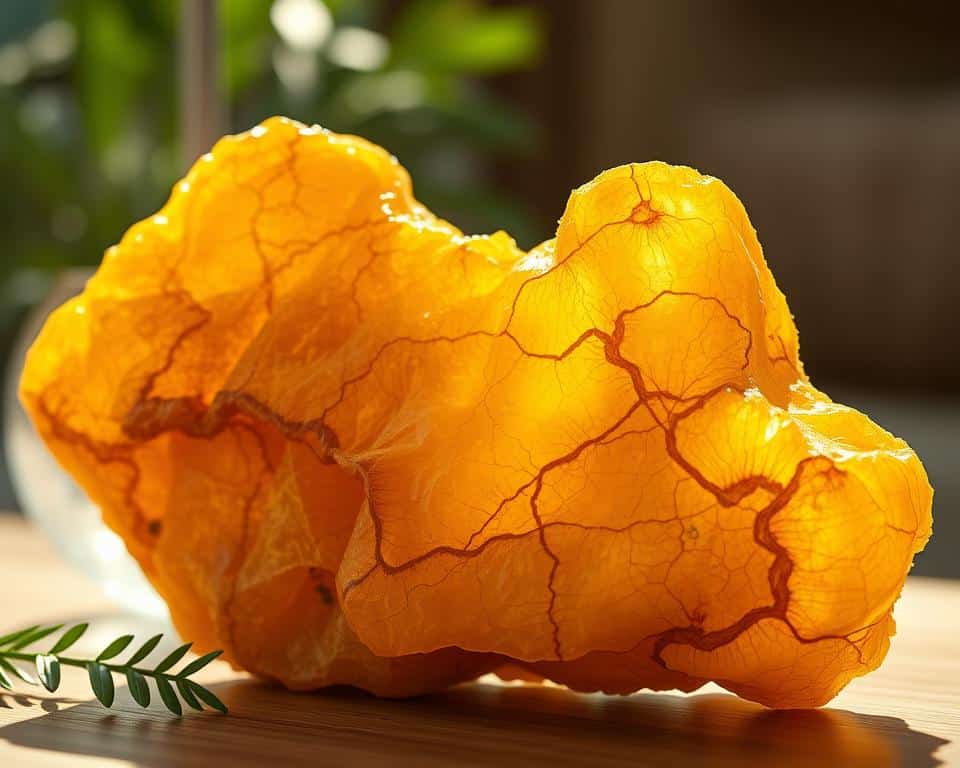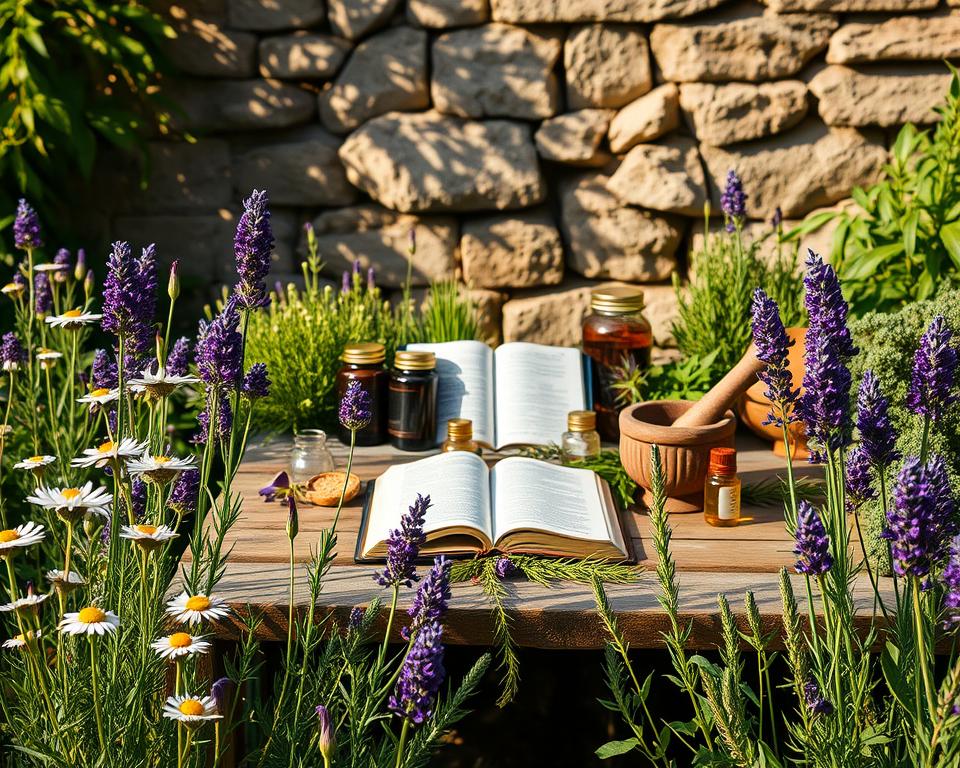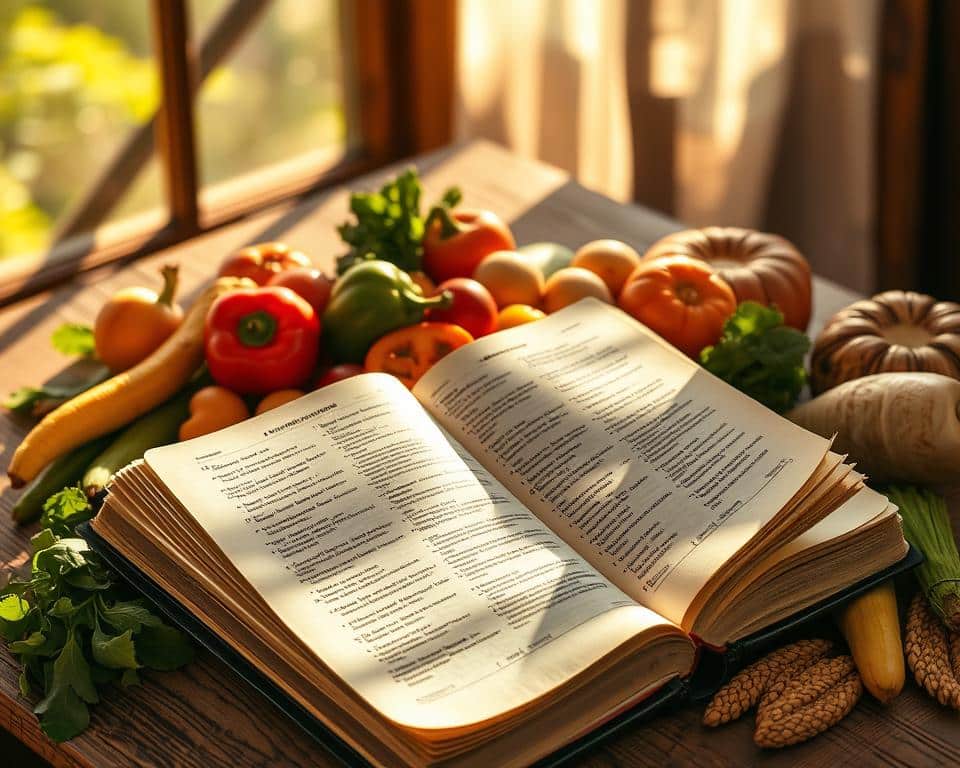“Let your heart be broken with the things that break the heart of God.” — Billy Graham
I write as a guide who studies Scripture and life. I want to show how ancient plants from Scripture helped people across times and how they still matter today.
Psalms 104:14 tells us God provides herbs for service. Archaeology and history link these plants to Israel, Egypt, and Mesopotamia. Finds at Tel Kabri and Tel Dor confirm long use and trade.
I will share each entry with a short verse, a clear description, and simple notes on safe use. My aim is honest healing information that honors God’s word and respects evidence.
Read to learn practical ways these plants supported daily life and faith. I write simply so you can remember and share with family or a small group.
Key Takeaways
- I explain classic plants with brief verse links and uses.
- History and archaeology show real past use and context.
- Focus stays on Scripture, safety, and honest evidence.
- Short notes help you use items for basic home care today.
- Faith and wise choices guide how we seek healing and hope.
Scripture, healing, and the roots of plant medicine
Scripture links certain plants to daily care, worship, and communal rites across ancient Near Eastern cultures.
I write as a careful guide. Scholars warn that old translations sometimes shift plant names. I rely on modern research when a verse needs a clear match.
How verses anchor plants to practice
Origanum syriacum likely fits the word often rendered “hyssop.” Its oil contains thymol and carvacrol with known antiseptic effects. Cedar references in rituals likely point to Juniperus phoenicea.

- Verses place plants inside worship, meals, and cleansing rites.
- Incense resins like frankincense and myrrh were burned in house and temple settings.
- Trees and resins served as incense and as salves for body care.
- I keep modern applications modest and safe, and I seek God’s word first.
| Scriptural term | Likely plant | Use in context |
|---|---|---|
| Hyssop | Origanum syriacum | Cleansing rites, aromatic antiseptic |
| Cedar | Juniperus phoenicea | Ritual fumigation, construction, symbolic purity |
| Frankincense / Myrrh | Boswellia / Commiphora | Incense, anointing oil, salves |
Summary: Cultures across Egypt, Mesopotamia, and Israel used similar plants, but Scripture points our hope and care to God’s word while guiding modest use today.
Natural remedies in the Bible
I list familiar resins, spices, and plants that appear in Scripture and in old care practices. Each entry notes a clear use and the basic evidence for effects.

Frankincense and myrrh
Frankincense is a Boswellia resin used as incense and in anointing oil. It shows anti-inflammatory potential tied to boswellic acids, though those acids are not part of the essential oil.
Myrrh comes from Commiphora trees. People used it as perfume, for embalming, and in salves. Its antiseptic and analgesic properties made it useful for oral care and wound dressings.
Saffron, hyssop, and aloe
Saffron (Crocus sativus) appears in Song of Solomon. People also used it in foods and teas. Research notes possible mood and appetite benefits, linked to safranal.
Hyssop likely refers to Origanum syriacum. It served cleansing rites and was brewed as a gargle or tea for respiratory support.
Aloe stood in burial care and skin treatment for thousands years. It still sees topical use for burns and rashes today.
Cinnamon, garlic, cassia, and balm of Gilead
Cinnamon and cassia appear in anointing mixtures and as spices. Cinnamon has antifungal evidence and a role in glucose support.
Garlic featured as food and simple medicine. Studies support benefits for heart health and immune support.
Balm of Gilead describes a valued resinous substance used as a healing salve and trade good in ancient times.
- Note: Frankincense and myrrh are tied to the nativity story: “they opened their treasures and presented gifts of gold, frankincense and myrrh.”
How these spices, oils, and plants were used in Bible times
People in old Israel used fragrant resins and herbs at home and at worship to shape daily life. Families burned incense in the house for scent and welcome. Priests burned incense in the temple as part of set rituals that marked prayer and petition.
Incense, perfume, and rituals
Trees that yield resins gave base materials for perfume oils and incense. Frankincense and myrrh were burned in sanctuaries and also used to anoint people and objects.
Foods and bitter herbs at Passover
At the Passover meal, bitter herbs such as parsley and coriander seeds appeared as food and symbol. Archaeology at Tel Dor and Megiddo shows cinnamon residues and mint or myrtle pollen, which fit these uses.
Oils, salves, and water preparations
People mixed oils and resins into salves, used water extracts for simple washes, and ground spices with a mortar and pestle. Wine jars from Tel Kabri held additives like cedar oil and storax that also preserved and likely helped health properties.
- Summary: Spices and plants shaped cooking, washing, and ritual life across cultures while Scripture guided faithful practice.
Still used today: benefits, effects, and common applications
I describe how a few classic spices, resins, and oils are kept in homes and gatherings today. I keep this concise and cautious, so you can try simple, safe practices with faith and care.
Essential oil uses for home and prayer
Essential oil blends are often diffused for calm and focus during prayer or study. Use small amounts and ventilate the room.
I note that the essential oil of frankincense smells grounding, but it does not contain boswellic acids.
Cooking and teas: mint, anise, cumin, saffron
Use peppermint for gas or mild nausea and anise tea for digestion and cough support. Cumin seeds contain cuminaldehyde and show glucose-support effects in some studies.
Add a few saffron threads to rice or tea for aroma and color. Keep portions small; saffron is strong and costly.
Topical uses: aloe gel, myrrh, and frankincense resin
Aloe gel is a simple first-aid staple for minor burns and dry skin. Apply to intact skin and watch for sensitivity.
Myrrh appears in Traditional Chinese Medicine and Ayurveda for pain and inflammation and is also used for oral care as a diluted rinse.
| Use | Example | Benefit / effect | Notes |
|---|---|---|---|
| Diffusion | Frankincense oil | Calm, scent for prayer | Use low dose; ventilate room |
| Cooking | Mint, cumin, saffron | Flavor; digestion; appetite control | Integrate into foods you already eat |
| Topical | Aloe gel, myrrh | Skin hydration; antiseptic oral care | Test small area; dilute tinctures |
| Daily habit | Cinnamon in oatmeal | Flavor; glucose support | Part of a healthy system and diet |
Summary: These plants and oils are still used today for modest benefits and practical effects. I encourage small doses, careful testing, and a clinician consult when you have ongoing conditions. These practices link thousands years of use with commonsense care today.
What research and history say about these remedies
I review archaeological finds and language studies to separate fact from guess. Scholars now list about 45 species with stronger support for ancient use. Only five plants are named with clear medical terms in Scripture: fig, nard, hyssop (Origanum syriacum), balm of Gilead, and mandrake.
Evidence from Ancient Egypt and Mesopotamia
Archaeobotany shows jars and residues at sites like Tel Kabri held resins and herbs that preserved wine and likely helped health. Long-distance trade moved these substances across cultures of the Fertile Crescent.
In Egypt and Mesopotamia, plant use and ritual often mixed. Doctors and priests treated disease with plants while also using incantations. Israel’s texts, by contrast, warned against magic and pointed people to God.
Modern studies on boswellic acids, thymol, carvacrol
Lab work finds that frankincense resin contains boswellic acids with anti-inflammatory promise. These acids are nonvolatile, so they do not appear in frankincense essential oil.
Oregano-type hyssop oils contain thymol and carvacrol, which show antiseptic effects in tests. Small trials suggest saffron may help mood and some women’s symptoms; dose ranges in studies are modest and controlled.
| Source | Find | Implication |
|---|---|---|
| Tel Kabri / Tel Dor | Resins, spice residues | Preservation, trade, supportive health effects |
| Philology / archaeobotany | Narrowed plant list (~45) | Better ID of each plant term prevents error |
| Lab studies | Boswellic acids; thymol/carvacrol | Anti-inflammatory potential; antiseptic properties |
Summary: Careful reading of terms and testing of substances helps us learn from past times. We can respect historic practice while testing claims carefully and using plants wisely today.
Safe use, sourcing, and quality for oils and spices
Knowing what to buy, how to dilute, and when to stop is vital for home use. I offer clear, practical steps so families can handle resins and oil with care and confidence.
Pure resin and essential oil selection
Buy labeled products. Choose sellers who list the Latin name, part used, and test results. That helps confirm identity and quality for any plant or resin you select.
Know the properties: boswellic acids sit in frankincense resin, not in essential oil. Myrrh shows antiseptic and analgesic traits and is used in oral care.
Dose, dilution, and interactions
Topical dilution: Use 1%–3% for most applications — about 1–3 drops per teaspoon of carrier oil. Cinnamon oil can irritate; use very low dilution and patch-test first.
- Keep oils away from eyes, inner ears, and broken skin.
- If irritation starts, wash with carrier oil, not water.
- Children and older adults need lower doses and extra care.
- Check with your physician for pregnancy, epilepsy, chronic heart or liver disease before use.
- Some herbs alter drug action; review your medicines first.
| Item | Note | Quick tip |
|---|---|---|
| Frankincense (resin) | Boswellic acids present | Use resin for extracts |
| Frankincense (oil) | Volatile scent only | Diffuse or dilute topically |
| Cinnamon oil | Glucose support; antifungal; irritant risk | Patch test; dilute very low |
Start slow: Introduce one plant product at a time, log dose and response, and follow simple cleansing steps like hand washing and clean tools when you prepare salves, rinses, or teas.
Clearing common myths and misconceptions
I will correct common misunderstandings gently and plainly. Clear reading of Scripture and basic history helps separate pious legend from grounded fact.
The account in Matthew notes the Magi “saw the child with his mother Mary” and then “opened their treasures and presented gifts of gold, frankincense and myrrh.” These items were valuable and carried practical uses.
Gold served as wealth. Frankincense and myrrh functioned as perfume, incense, and burial materials used both in house and temple rituals. Their value lay in honor and usefulness, not only in show.
What “hyssop” likely means in Scripture
Scholars now favor Origanum syriacum for the biblical term often translated “hyssop.” This Syrian oregano fits local botany and ritual use better than Hyssopus officinalis, a garden herb from other regions.
Older translations sometimes mislead by using familiar names that do not match Near Eastern plants. Careful language study helps align each term with the right plant and context.
| Common claim | Plain fact | Implication |
|---|---|---|
| Presented gifts were only symbolic | They were both symbolic and practical | Gifts honored Christ and had household or ritual use |
| “Hyssop” = garden hyssop | Likely Origanum syriacum | Changes identification for ritual and medicinal notes |
| Incense was luxury only | Used in house care and rituals | Fragrance had social, ceremonial, and practical value |
- Note: Song Solomon lists spices like saffron and cinnamon to paint a scene of abundance and delight, not merely luxury.
- Read Scripture with measured care. Respect the text while using historical research to inform our understanding.
Bringing Scripture-based remedies into daily life today
Small acts link our past and present. A pinch of coriander or garlic at meals helps build steady benefits for daily life.
Steep mint or anise in hot water for 5–10 minutes and sip slowly. Keep aloe gel for minor burns and apply a thin layer to clean skin twice daily.
Use a small dish of frankincense resin as incense with a cracked window and heat-safe tools. Try one essential oil at a time, diluted, to protect your system.
I note times, doses, and responses, and share those notes with your clinician when you use any medicine. Plant a herb pot and add fruits or a few saffron threads to rice for family meals.
Share what works with your church group. Let faith and Scripture shape care today and across thousands years with hope.





